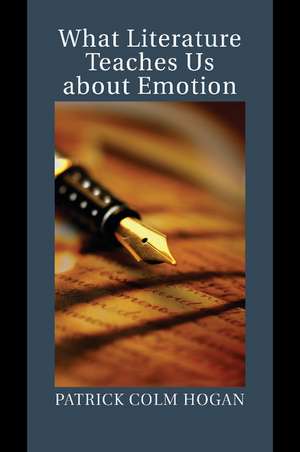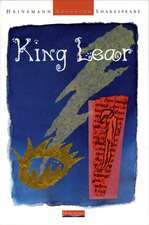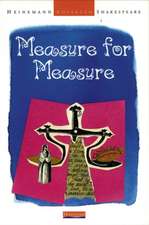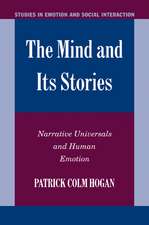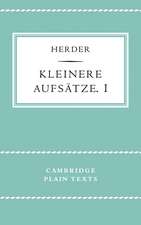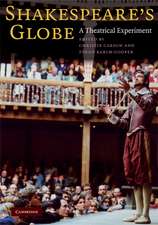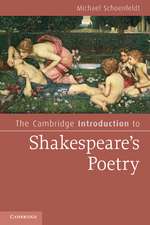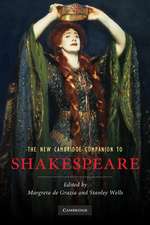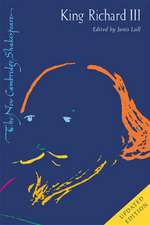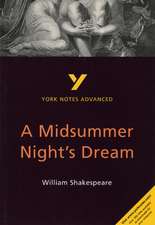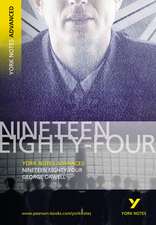What Literature Teaches Us about Emotion: Studies in Emotion and Social Interaction
Autor Patrick Colm Hoganen Limba Engleză Paperback – 17 dec 2014
| Toate formatele și edițiile | Preț | Express |
|---|---|---|
| Paperback (1) | 321.90 lei 43-57 zile | |
| Cambridge University Press – 17 dec 2014 | 321.90 lei 43-57 zile | |
| Hardback (1) | 781.52 lei 43-57 zile | |
| Cambridge University Press – 20 mar 2011 | 781.52 lei 43-57 zile |
Din seria Studies in Emotion and Social Interaction
-
 Preț: 177.14 lei
Preț: 177.14 lei -
 Preț: 154.69 lei
Preț: 154.69 lei -
 Preț: 201.47 lei
Preț: 201.47 lei - 14%
 Preț: 787.78 lei
Preț: 787.78 lei - 9%
 Preț: 694.80 lei
Preț: 694.80 lei -
 Preț: 323.18 lei
Preț: 323.18 lei -
 Preț: 397.46 lei
Preț: 397.46 lei -
 Preț: 322.62 lei
Preț: 322.62 lei -
 Preț: 354.03 lei
Preț: 354.03 lei -
 Preț: 353.02 lei
Preț: 353.02 lei -
 Preț: 287.87 lei
Preț: 287.87 lei -
 Preț: 449.38 lei
Preț: 449.38 lei -
 Preț: 360.39 lei
Preț: 360.39 lei -
 Preț: 327.68 lei
Preț: 327.68 lei - 11%
 Preț: 426.80 lei
Preț: 426.80 lei - 14%
 Preț: 729.08 lei
Preț: 729.08 lei - 11%
 Preț: 700.16 lei
Preț: 700.16 lei - 14%
 Preț: 727.26 lei
Preț: 727.26 lei - 14%
 Preț: 793.59 lei
Preț: 793.59 lei -
 Preț: 353.10 lei
Preț: 353.10 lei -
 Preț: 389.84 lei
Preț: 389.84 lei -
 Preț: 423.39 lei
Preț: 423.39 lei - 11%
 Preț: 528.82 lei
Preț: 528.82 lei -
 Preț: 361.92 lei
Preț: 361.92 lei -
 Preț: 327.20 lei
Preț: 327.20 lei - 14%
 Preț: 725.57 lei
Preț: 725.57 lei -
 Preț: 346.23 lei
Preț: 346.23 lei - 14%
 Preț: 898.82 lei
Preț: 898.82 lei - 14%
 Preț: 676.89 lei
Preț: 676.89 lei - 5%
 Preț: 357.54 lei
Preț: 357.54 lei - 14%
 Preț: 853.80 lei
Preț: 853.80 lei -
 Preț: 360.26 lei
Preț: 360.26 lei -
 Preț: 378.36 lei
Preț: 378.36 lei - 14%
 Preț: 726.23 lei
Preț: 726.23 lei -
 Preț: 364.42 lei
Preț: 364.42 lei - 11%
 Preț: 469.84 lei
Preț: 469.84 lei
Preț: 321.90 lei
Nou
Puncte Express: 483
Preț estimativ în valută:
61.60€ • 64.47$ • 51.27£
61.60€ • 64.47$ • 51.27£
Carte tipărită la comandă
Livrare economică 31 martie-14 aprilie
Preluare comenzi: 021 569.72.76
Specificații
ISBN-13: 9781107477742
ISBN-10: 1107477743
Pagini: 352
Ilustrații: 6 b/w illus.
Dimensiuni: 153 x 230 x 22 mm
Greutate: 0.52 kg
Editura: Cambridge University Press
Colecția Cambridge University Press
Seria Studies in Emotion and Social Interaction
Locul publicării:New York, United States
ISBN-10: 1107477743
Pagini: 352
Ilustrații: 6 b/w illus.
Dimensiuni: 153 x 230 x 22 mm
Greutate: 0.52 kg
Editura: Cambridge University Press
Colecția Cambridge University Press
Seria Studies in Emotion and Social Interaction
Locul publicării:New York, United States
Cuprins
Introduction: studying literature, studying emotion; 1. Fictions and feelings: on the place of literature in the study of emotion; 2. What emotions are; 3. Romantic love: Sappho, Li Ch'ing-Chao, and Romeo and Juliet; 4. Grief: Kobayashi Issa and Hamlet; 5. Mirth: from Chinese jokes to A Comedy of Errors; 6. Guilt, shame, jealousy: The Strong Breed, Macbeth, Kagekiyo, and Othello; 7. From attachment to ethical feeling: Rabindranath Tagore and Measure for Measure; 8. Compassion and pity: The Tempest and Une Tempête; Afterword: studying literature shaping emotion: Madame Bovary and the sublime.
Recenzii
“Literature offers a veritable treasure trove of wisdom and insights about the nature and manifestations of human emotions, yet emotion researchers have been slow to explore this exciting domain. This book represents a groundbreaking attempt to bridge the gap between scientific research and complementary literary insights on emotions. The chapters explore in considerable detail such core emotions as love, guilt, mirth, shame, and compassion, drawing on the work of such literary giants as Shakespeare. The author takes us on an exhilarating journey of discovery of the subtleties, structure, and functions of human emotions using an ingenious approach fusing art and science. This book will be warmly welcomed by all researchers, teachers, students, and professionals interested in understanding emotions, and will be enjoyed by everyone who is fascinated by the intricacies of human emotionality.”
--Joseph P. Forgas, University of New South Wales
“In What Literature Teaches Us about Emotion, leading literary cognitivist Patrick Colm Hogan stages readings of well-selected literary texts illustrating love, grief, mirth, guilt, shame, jealousy, disgust, compassion, and pity. Beyond their thematic resonances, Hogan’s chosen texts serve as a source of knowledge about how human emotions work. Illuminating and suggestive for conversations in affective literary studies, this book lends itself to discussion in the classroom, where the dialogs about texts by means of which we come to understand our responses to the world and to one another take place.”
--Suzanne Keen, Washington and Lee University
“What Literature Teaches Us about Emotion provides an extraordinarily lucid and insightful account of the relevance of the cognitive sciences to literary study, as well as the potential for literary studies to contribute to a genuinely interdisciplinary history of emotion.”
--Evelyn Tribble, University of Otago, New Zealand
"...The book is worth the substantial price for the first two chapters alone.... Hogan’s volume is valuable to a range of psychological and literary scholars and, surprisingly, psychological practitioners.... a powerful source of data for the study of emotion that is there for the taking. The complexity of emotional reactivity to life’s grim prospects is presented in What Literature Teaches Us About Emotion in clear fashion and invites the reader to examine what is being read and respond to it as a source of information about self."
--Dr. David Hargrove, University of Mississippi, PsycCRITIQUES
"What Literature Teaches Us about Emotion is substantial and rich, and a model of rigorous argument."
--George Lăzăroiu, PhD /IISHSS, New York, Review of Contemporary Philosophy
"As good books should, this one provokes a sense of engagement and stimulates dialogue with its reader, and the question it poses in the title is a profound one.... Patrick Hogan’s erudite and lively book leaves such questions open for others to pursue, while itself bringing into fruitful dialogue disparate fields of analysis not often brought together.... This is a refreshingly ambitious book in the sheer magnitude of the task of talking about emotions in literature by using findings from science and history, and seeing literature as a valid and invaluable source for psychological exploration. Hogan lucidly cuts through complexities to important issues. Even if more answers to the question ‘What does literature teach us about emotions?’ may lie beyond its parameters, this book does a valuable service in asking it."
--R. S. White, The University of Western Australia, Parergon - Journal of the Australian and New Zealand Association for Medieval and Early Modern Studies
--Joseph P. Forgas, University of New South Wales
“In What Literature Teaches Us about Emotion, leading literary cognitivist Patrick Colm Hogan stages readings of well-selected literary texts illustrating love, grief, mirth, guilt, shame, jealousy, disgust, compassion, and pity. Beyond their thematic resonances, Hogan’s chosen texts serve as a source of knowledge about how human emotions work. Illuminating and suggestive for conversations in affective literary studies, this book lends itself to discussion in the classroom, where the dialogs about texts by means of which we come to understand our responses to the world and to one another take place.”
--Suzanne Keen, Washington and Lee University
“What Literature Teaches Us about Emotion provides an extraordinarily lucid and insightful account of the relevance of the cognitive sciences to literary study, as well as the potential for literary studies to contribute to a genuinely interdisciplinary history of emotion.”
--Evelyn Tribble, University of Otago, New Zealand
"...The book is worth the substantial price for the first two chapters alone.... Hogan’s volume is valuable to a range of psychological and literary scholars and, surprisingly, psychological practitioners.... a powerful source of data for the study of emotion that is there for the taking. The complexity of emotional reactivity to life’s grim prospects is presented in What Literature Teaches Us About Emotion in clear fashion and invites the reader to examine what is being read and respond to it as a source of information about self."
--Dr. David Hargrove, University of Mississippi, PsycCRITIQUES
"What Literature Teaches Us about Emotion is substantial and rich, and a model of rigorous argument."
--George Lăzăroiu, PhD /IISHSS, New York, Review of Contemporary Philosophy
"As good books should, this one provokes a sense of engagement and stimulates dialogue with its reader, and the question it poses in the title is a profound one.... Patrick Hogan’s erudite and lively book leaves such questions open for others to pursue, while itself bringing into fruitful dialogue disparate fields of analysis not often brought together.... This is a refreshingly ambitious book in the sheer magnitude of the task of talking about emotions in literature by using findings from science and history, and seeing literature as a valid and invaluable source for psychological exploration. Hogan lucidly cuts through complexities to important issues. Even if more answers to the question ‘What does literature teach us about emotions?’ may lie beyond its parameters, this book does a valuable service in asking it."
--R. S. White, The University of Western Australia, Parergon - Journal of the Australian and New Zealand Association for Medieval and Early Modern Studies
Notă biografică
Descriere
This book explores emotion in a range of literary works, in the context of current neurobiological, psychological, sociological and other empirical research.
